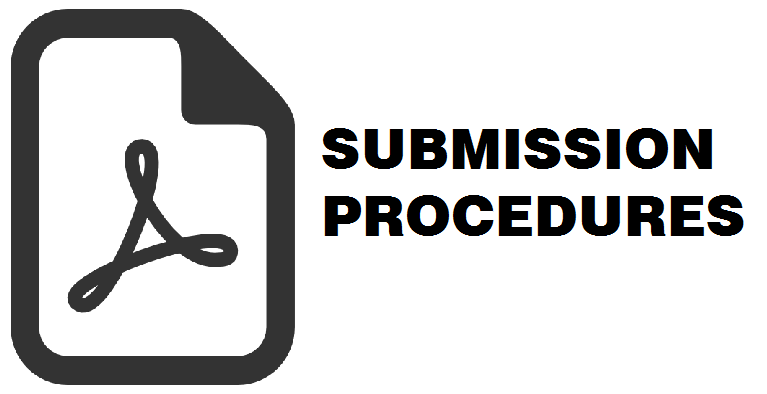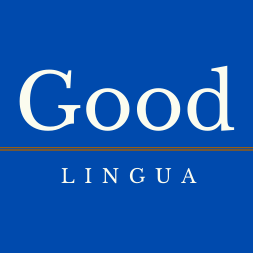Improving WASH Status and Knowledge in the Coastal Areas of Bangladesh
Bilqis Amin Hoque(1), Sufia Khanam(2), Md. Abubakkor Siddik(3*), Sohel Ahmed(4), Abu Zahid Shipon(5)
(1) Environment and Population Research Center (EPRC), Dhaka, Bangladesh
(2) Environment and Population Research Center (EPRC), Dhaka, Bangladesh
(3) Dept. of Emergency Management, Patuakhali Science and Technology University, Dumki, Patuakhali-8602, Bangladesh.
(4) Environment and Population Research Center (EPRC), Dhaka, Bangladesh
(5) Environment and Population Research Center (EPRC), Dhaka, Bangladesh
(*) Corresponding Author
Abstract
This action research aimed to improve the status of water, sanitation, and hygiene (WASH) and related knowledge in the coastal Kalia and Lohagara upazilas of Narail district in Bangladesh. The project offered a total of 606 safe water options, 950 household latrines, 50 latrines for disabled individuals, five community latrines, and 20 sanitation blocks. Further, created WASH awareness through organizing courtyard meetings and folk song events, distributing awareness posters, WASH pouts, school routines, school WASH posters, installing billboards, and painting community walls. Female adults from 534 randomly selected households’ were interviewed during the base-line survey and end-line survey. This study revealed that the rate of use of deep tube wells and hygienic latrine—that is, septic tanks and leak-free ring slab latrines—has increased substantially in both areas. Besides, perceptions about health problems associated with drinking arsenic-contaminated water improved considerably. Furthermore, knowledge about hygienic latrine improved by about 25 percentage points. Perception about hygienic hand washing and post-defecation hand washing (both hands with soap) practice improved but still needs to work on improving before eating both hand washing with soap practice. Therefore, suggesting further education and reinforcement on the importance of washing hands with soap before eating. This study also explored that knowledge about the mode of diarrheal transmission improved at the end of the intervention. However, to maintain favourable impressions and overcome difficulties in comprehending diarrhoea transmission mechanisms, particularly with regard to water, further education and focused interventions are needed.
Received: 2024-07-28 Revised: 2024-08-20 Accepted: 2025-03-11 Published: 2025-05-26
Keywords
Full Text:
PDFReferences
Akhtar, M. P., Moniruzzaman, M., Siddik, M. A., & Hoque, M. A.-A. (2018). Vulnerability and Coping Strategy of Female-Headed Households in a Waterlogged Area of Bangladesh. Jagannath University Journal of Life and Earth Sciences, 4(1), 25–41.
Alam, M. Z., & Mukarrom, A. Al. (2022). Hygiene, sanitation facility, and assessment of drinking water quality in the schools of Chattogram city, Bangladesh. Global Health Journal, 6(4), 204–211. https://doi.org/10.1016/j.glohj.2022.12.003
Ari, I. R. D., Dwi Purnamasari, W., Aulia, N., & Mayori, I. M. (2024). A Holistic Approach to Alleviating Water Poverty in Gresik Regency. Indonesian Journal of Geography, 56(3), 489–499. https://doi.org/10.22146/ijg.97621
Azupogo, F., Abdul-Rahaman, F., Gyanteh, B., & Atosona, A. (2019). Hygiene and Sanitation Practices and the Risk of Morbidity among Children 6–23 Months of Age in Kumbungu District, Ghana. Advances in Public Health, 2019, 1–12. https://doi.org/10.1155/2019/4313759
BBS, & UNICEF. (2019). Progotir Pathey : Bangladesh Multiple Indicator Cluster Survey 2019. Dhaka:Bangladesh.
BBS. (2014). Bangladesh Population and Housing Census 2011, National Report (Volume 2: Union Statistics). Dhaka, Bangladesh.
Chimankar, D. A. (2016). Urbanization and Condition of Urban Slums in India. Indonesian Journal of Geography, 48(1), 28–36. https://doi.org/10.22146/ijg.12466
EPRC. (2014). Sustainable Involvement of Empowered Women in the Southwest Area Integrated Water Resources Planning and Management Project (SAIWRPMP). Dhaka: Bangladesh.
GED. (2022). Sustainable development goals: Bangladesh progress report 2022. Dhaka: Bangladesh. Retrieved from https://gedkp.gov.bd/wp-content/uploads/2023/02/SDGs-Progress-Report-2022-Final-output-file-1-February-2023-Full-book_compressed.pdf?post_id=3032#:~: text=As per the SDG index,our commitments to attaining SDGs
Hoque, B. A., Khanam, S., & Siddik, M. A. (2022). Enhancing Youth Capacities on Climate Change Adaptation and Drinking Water Management. Asian Journal of Social Sciences and Legal Studies, 4(6), 248–253. https://doi.org/10.34104/ajssls.022.02480253
Hoque, B. A., Khanam, S., Ahmed, S., & Siddik, M. A. (2023). The Role of Female Local Government Members in Creating Wash Awareness in Bangladesh. International Journal of Energy, Environment, and Economics, 30(1), 53–65.
Hoque, B. A., Khanam, S., Siddik, M. A., Huque, S., & Zahid, M. A. (2015). Creating Arsenic Safe Villages with User-Women led Sustainable Improvement of Water, Sanitation and Hygiene in Narail District. Dhaka, Bangladesh.
Hoque, B. A., Khanam, S., Siddik, M. A., Huque, S., Rahman, A., & Zahid, M. A. (2016). Technological, Social and Policy aspects in Bangladesh Arsenic Mitigation and Water Supply: Connections and Disconnections. In P. Bhattacharya, M. Vahter, J. Jarsjö, J. Kumpiene, A. Arslan, S. Charlotte, … R. Naidu (Eds.), Arsenic Research and Global Sustainability (pp. 570–571). CRC Press. Retrieved from https://www.crcpress.com/Arsenic-Research-and-Global-Sustainability-Proceedings-of-the-Sixth-International/Bhattacharya-Vahter-Jarsjo-Kumpiene-Ahmad-Sparrenbom-Jacks-Donselaar-Bundschuh-Naidu/p/book/9781138029415
Hoque, B. A., Khanam, S., Zahid, M. A., Siddik, M. A., & Ahmed, S. (2018). Women Members of Local Government Led Rural Sanitation in Bangladesh: Policy and Technology. International Journal of Science and Research (IJSR), 7(7), 411–419. https://doi.org/10.21275/ART20183550
Hsan, K., Naher, S., Griffiths, M. D., Shamol, H. H., & Rahman, M. A. (2019). Factors associated with the practice of water, sanitation, and hygiene (WASH) among the Rohingya refugees in Bangladesh. Journal of Water, Sanitation and Hygiene for Development, 9(4), 794–800. https://doi.org/10.2166/WASHDEV.2019.038
Hutton, G., & Chase, C. (2017). Water Supply, Sanitation, and Hygiene. In Charles N. Mock, Rachel Nugent, Olive Kobusingye, & Kirk R. Smith (Eds.), Injury Prevention and Environmental Health (3rd ed., Vol. 7, pp. 171–198). Washington DC : The World Bank. Retrieved from https://www.ncbi.nlm.nih.gov/books/NBK525207/
Ifrat, K. M., Ghosh, R. C., & Siddik, M. A. (2024). Sanitation and Health Status of the Coastal Urban Slums in Bangladesh. International Journal of Energy, Environment, and Economics, 31(4), 10–17.
Islam, S. M. D. U., Mondal, P. K., Ojong, N., Bodrud-Doza, M., Siddique, M. A. B., Hossain, M., & Mamun, M. A. (2021). Water, sanitation, hygiene and waste disposal practices as COVID-19 response strategy: insights from Bangladesh. Environment, Development and Sustainability, 23(8), 11953–11974. https://doi.org/10.1007/s10668-020-01151-9
Islam, T., Alam, O., & Misbahuzzaman, K. (2015). Rural Water Supply, Sanitation and Hygiene in Bangladesh: An Investigation of Lohagara Upazila. In Bangladesh Development Research Working Paper Series (BDRWPS) (No. 27). Bangladesh Development Research Center (BDRC). Retrieved from Bangladesh Development Research Center (BDRC) website: https://ideas.repec.org/p/bnr/wpaper/27.html
Khanam, S., Siddik, M. A., & Zahid, M. A. (2024). Analyzing coastal community situation of water, sanitation and hygiene in Bangladesh. Fronteiras: Journal of Social, Technological and Environmental Science, 13(3), 15–24.
Mahmud, I., & Mbuya, N. (2016). Water, Sanitation, Hygiene, and Nutrition in Bangladesh. Washington DC. Retrieved from https://openknowledge.worldbank.org/bitstream/handle/10986/22800/9781464806988.pdf
Moniruzzaman, M., & Siddik, M. A. (2012). An Investigation of Emergency Response and Rehabiliation Processes of the Cyclone Aila. Jahangirnagar Bishwavidyalay Bhugol O Paribesh Samikkhan, 31, 57–70.
Moniruzzaman, M., & Siddik, M. A. (2013). Safe Water Supply Situation in the Disaster Prone Area: A Study on Sreenagar-Kalinagar Mauza of Dacope Upazila. Jahangirnagar Bishwavidyalay Bhugol O Paribesh Samikkhan, 32, 73–87.
Moniruzzaman, M., Rahman, M. A., & Siddik, M. A. (2014). Assessing the Damage and Recovery at Household Level: A Case Study of Cyclone Aila Affected Area. ASA University Review, 8(1), 263–274.
Moniruzzaman, M., Siddik, M. A., & Akhtar, M. P. (2013). Damage Nature of Family Shelters due to Cyclone Sidr: A Study on Sarankhola Upazila. Jagannath University Journal of Science, 2(1), 21–31.
Nakagiri, A., Niwagaba, C. B., Nyenje, P. M., Kulabako, R. N., Tumuhairwe, J. B., & Kansiime, F. (2016). Are pit latrines in urban areas of Sub-Saharan Africa performing? A review of usage, filling, insects and odour nuisances. BMC Public Health, 16(1), 1–16. https://doi.org/10.1186/s12889-016-2772-z
Naujokas, M. F., Anderson, B., Ahsan, H., Aposhian, H. V., Graziano, J. H., Thompson, C., & Suk, W. A. (2013). The Broad Scope of Health Effects from Chronic Arsenic Exposure: Update on a Worldwide Public Health Problem. Environmental Health Perspectives, 121(3), 295–302. https://doi.org/10.1289/ehp.1205875
Phillips, R. M., Vujcic, J., Boscoe, A., Handzel, T., Aninyasi, M., Cookson, S. T., … Ram, P. K. (2015). Soap is not enough: handwashing practices and knowledge in refugee camps, Maban County, South Sudan. Conflict and Health, 9(1), 39. https://doi.org/10.1186/s13031-015-0065-2
Rahman, A., Vahter, M., Ekström, E.-C., & Persson, L.-Å. (2011). Arsenic Exposure in Pregnancy Increases the Risk of Lower Respiratory Tract Infection and Diarrhea during Infancy in Bangladesh. Environmental Health Perspectives, 119(5), 719–724. https://doi.org/10.1289/ehp.1002265
Rahman, M. A., Moniruzzaman, M., & Siddik, M. A. (2015). Assessing the Impact and Recovery of Cyclone AILA on Households: The Modified Domestic Assets Index (MDAI) Approach. Jagannath University Journal of Life and Earth Science, 1(1), 17–25.
Siddik, M. A., & Islam, A. R. M. T. (2024a). A systematic review of cyclonic disaster: Damage-loss, consequences, adaptation strategies, and future scopes. Heliyon, 10(12), e33345. https://doi.org/10.1016/J.HELIYON.2024.E33345
Siddik, M. A., & Islam, A. R. M. T. (2024b). Review of Coastal Land Transformation: Factors, Impacts, Adaptation Strategies, and Future Scopes. Geography and Sustainability, 5(2), 167–178. https://doi.org/10.1016/J.GEOSUS.2024.01.010
Siddik, M. A., & Moniruzzaman, M. (2013). Impacts of Cyclone Sidr on Char Dwellers: A Case Study of Majherchar Island in Pirojpur District. Jagannath University Journal of Science, 2(2), 83–96.
Siddik, M. A., Hasan, M. M., Islam, M. T., & Zaman, A. K. M. M. (2022). Climate Change Drivers, Effects, and Mitigation-Adaptation Measures for Cities. Asian Journal of Social Sciences and Legal Studies, 4(5), 160–177. https://doi.org/10.34104/ajssls.022.01600177
Siddik, M. A., Moniruzzaman, M., & Akhtar, M. P. (2014). Disaster Impact and Recovery Initiatives of Water Supply and Sanitation System: A Case on Cyclone Sidr. Journal of Science and Technology, 4(1), 143–155.
WHO, & UNICEF. (2021). Progress on Household Drinking Water, Sanitation and Hygiene, 2000-2020: Five Years into the SDGs. Dhaka:Bangladesh.
WHO. (2022, March 21). Sanitation. Retrieved January 23, 2023, from https://www.who.int/news-room/fact-sheets/detail/sanitation
Widyastuti, M., & Haryono, E. (2017). Water Quality Characteristics of Jonge Telaga (Doline Pond) as Water Resources for the People of Semanu District Gunungkidul Regency. Indonesian Journal of Geography, 48(2), 157–167. https://doi.org/10.22146/ijg.17595+
Yunus, F. M., Ahmed, M. S., Islam, M. I., Das, M. C., & Khan, A. (2021). Mapping and situation analysis of basic WASH facilities at households in Bangladesh: Evidence from a nationally representative survey. PLOS ONE, 16(11), e0259635. https://doi.org/10.1371/JOURNAL.PONE.0259635
Article Metrics
Refbacks
- There are currently no refbacks.
Copyright (c) 2025 Bilqis Amin Hoque, Sufia Khanam, Md. Abubakkor Siddik, Sohel Ahmed, Abu Zahid Shipon

This work is licensed under a Creative Commons Attribution-NonCommercial 4.0 International License.
The Indonesian Journal of Geography (ISSN 2354-9114 (online), ISSN 0024-9521 (print)) is an international journal published by the Faculty of Geography, Universitas Gadjah Mada in collaboration with The Indonesian Geographers Association. The content of this website is licensed under a Creative Commons Attribution-ShareAlike 4.0 International License
Accredited Journal, Based on Decree of the Minister of Research, Technology and Higher Education, Republic of Indonesia Number 225/E/KPT/2022, Vol 54 No 1 the Year 2022 - Vol 58 No 2 the Year 2026 (accreditation certificate download)










